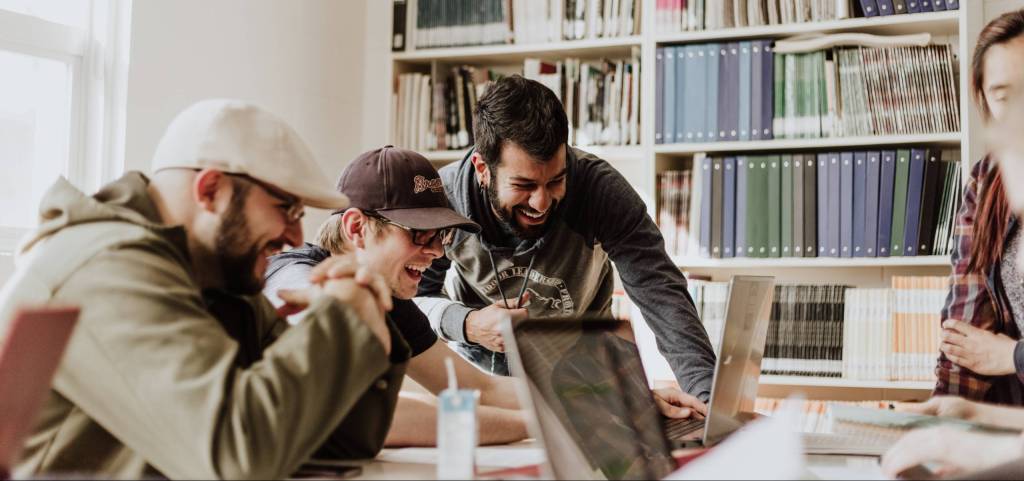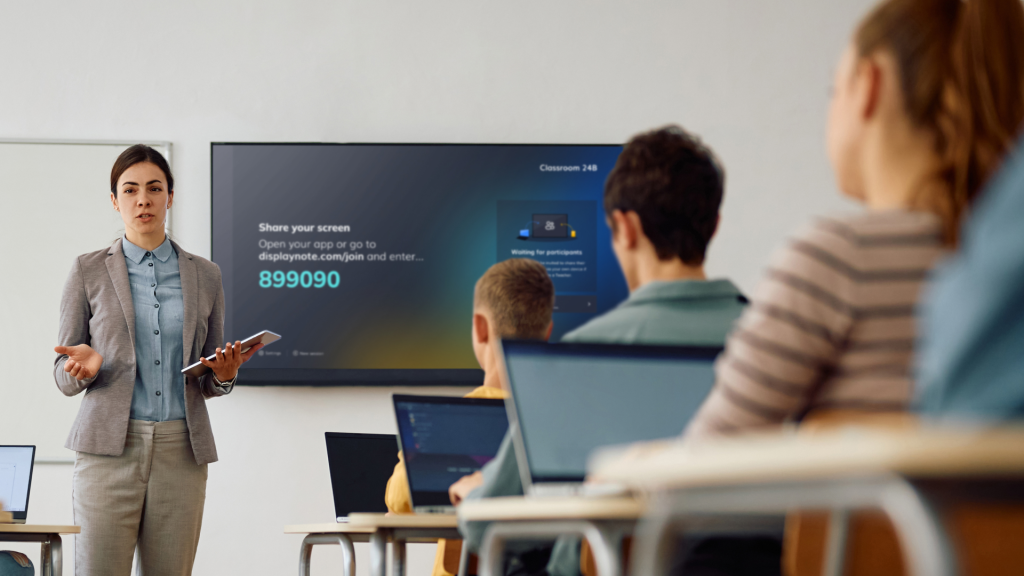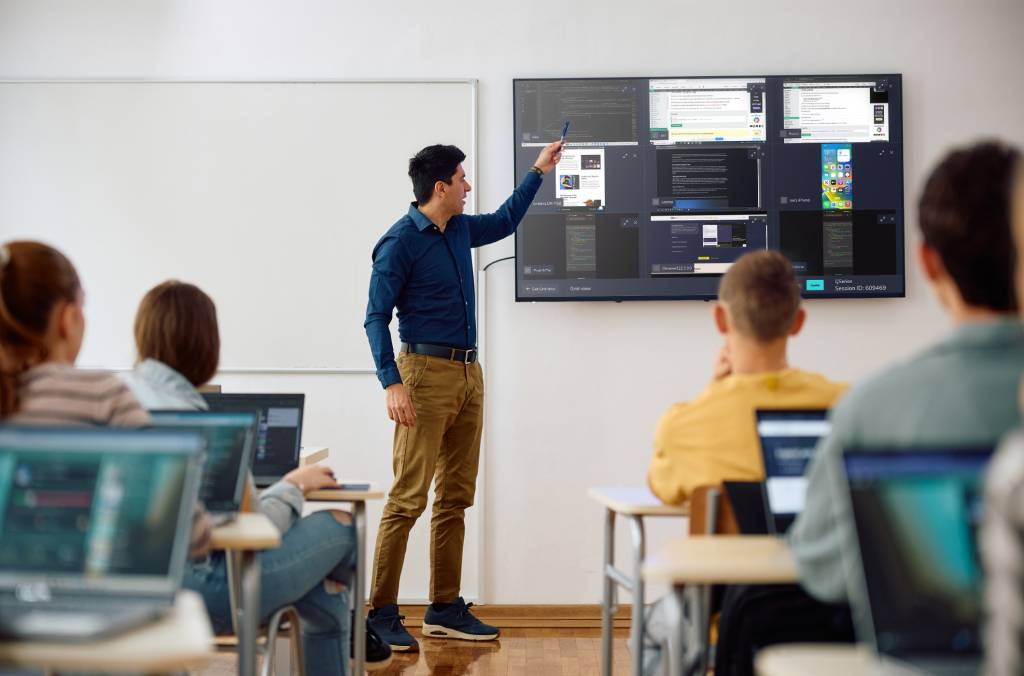
A day in the life of Miss Walker.
One of the main challenges of many schools today is providing an engaging learning environment to students.
With technology playing such a significant part in children’s lives nowadays, there’s no choice but to incorporate it into their education. It’s one way that’s sure to hold their attention and have them interact and engage with the class.
We compare two days in the life of Miss Walker, a secondary school History teacher – one day is before she had access to DisplayNote technology, and one is after.
Just look at the difference between her days…

Pre-DisplayNote
06.15 – My day starts pretty early. I have a 45-minute commute to school, but at this time of the morning, traffic is usually pretty light.
07.00 – I arrive at school. I check through emails including a request from heads of year for performance reports for the past month. Great – that’s a crate of paperwork I’ll need to bring home and trawl through. I also receive an email from my colleague asking me to prep her History classes for the day as she is unwell.
07.15 – I make my way to the photocopying room, since I now need to prep my colleague’s classes as well as my own! Luckily there’s only two other teachers queuing for the photocopier. One of the benefits of coming in early! Although the added workload of prepping my colleague’s classes mean photocopying will take much longer.
08.05 – 40 minutes later, weighed down with 750 copies!!! (sorry trees) I make my way to the staff briefing, while thinking to myself, there must be a better way of teaching without all this paper!
09.00 – First class of the day – 4th year students. To be honest, they’re the best class to have first thing on a Monday morning. They’re equally as tired as I am, probably due to the amount of studying they have for GSCEs, and they’re less excitable than younger students. Although the workload is HIGH.
10.50 – Half way through my third class of today and the students are showing no interest. I don’t blame them really – me talking at them for 25 minutes solid about The Cold War isn’t very engaging. Maybe I should’ve printed more handouts. I also confiscated 4 mobile phones this lesson – they’ll get them back at the end of the day.
12.15 – One student approaches me after class. They’re having difficulty understanding the topic, and the notes they’ve made previously make less sense to them now, in isolation (they’ve lost the handouts from a few previous sessions). I tell them I will reprint the handouts and give them to them tomorrow, and to come back to me if they still don’t understand. I worry about the student, I had a feeling they might be struggling, but they never approached me before now. I’ll give them extra attention in future. Maybe I should start emailing the handouts to students to prevent this from happening again.
12.30 – I’m on lunch duty today – the joys! Although Mrs Price, the English teacher, is also on lunch duty. We’ve got a bit of a teaching partnership going on, which works very well. If I’m teaching about a topic, for example, The War of the Roses, then she will choose a book to complement this, for example Shakespeare’s ‘King Richard lll’. We discuss briefly how we think our latest classes are going.
14.45 – Last class of the day. Which means last lesson syndrome. A very distracted class, with peak attitude, who are more interested in their phones and tablets. A couple of students complaining that the writing on the projection screen is too small, and they can’t see from the back of the room. Many children due to society are no longer interested in reading books and listening to anyone. They demand everything be as fast-paced as the rest of their lives. This lesson is spent trying to gain attention rather than teaching. I even try and incorporate an impromptu role play, but they’re still unmotivated.
15.25 – Another student comes to see me at the end of the day. They have a few questions about their class earlier – a few things they didn’t understand. I’m glad they came to speak to me, but I wish that students felt more comfortable to ask questions during class. I must discuss this at a staff meeting – ways to encourage students to speak out more during class. Of course, it’s came up before, but no innovations were created.
17.45 – I stay for two hours after school, and begin prepping classes for tomorrow. I head to the photocopying room but there is a queue 6 deep. I’ll just come in early again tomorrow morning.
Post-DisplayNote
06.45 – I wake up and go for a 20 minute run before work – I feel like a short jog sets me up for a productive day.
08.30 – Arrive into school 30 minutes before my first lesson. There’s a short staff briefing, mainly reminding teachers about the assembly tomorrow morning, and then I head off to my first class of the day.
09.00 – I have to teach a bunch of distracted and excitable first years about the Battle of Hastings. Previously, this would have filled me with dread – how to get these students engaged with the lesson. However our school has implemented new technology recently for teachers and students, including new software, called DisplayNote, that allows me to share content from my laptop to a main screen, and also down to the students’ individual devices. Documents are easier to see and follow by everyone. Traditional teaching methods have been flipped – students are not only listening to me, but they are participating more in lessons. I can even use my iPad to control my laptop and walk around the room to interact more with the students. The new software allows me to highlight and annotate over content, making it a more engaging lesson. It even allows students to annotate over my content, encouraging collaboration and allowing them to challenge the topic. The annotated versions of the document can be saved and sent to students, without permanently altering the original content. And the best part – no more photocopying handouts!
09.45 – My second class of the day is my 5th year class. I think out of all my classes, they love the new software the most. The content I present shows down on to their devices, and they make their own, individual notes, comments, annotations over the top. They can save their new versions of the document straight to their device – no need to write notes. It also means the students don’t need to worry about losing any handouts I give them, or their isolated notes not making sense. Because they can add their notes directly on the device, context is always provided, and they’ll never go missing. It helps massively with self-learning.
13.20 – Lunchbreak passed by with no incidents. I actually got to finish my sandwich today, and had time for a coffee. A student, who has come to me before saying he wasn’t fully understanding a certain topic, told me that he “gets it now”. I think this is due to a secret chat feature that DisplayNote includes. When I’m teaching, students can secretly send me a message to my device. He’s used it a couple of times during class – once to ask me to repeat a part of a topic, and secondly to ask me a very good question about World War ll. A few of the other students have used it as well. It’s definitely my favourite feature of the whole thing. Anything that allows students to speak up when they don’t understand something is a huge benefit in my eyes.
13.40 – One of my students couldn’t make it into school today due to bad weather. She called me and asked me could I send her a code so that she could join the lesson from home. This type of thing doesn’t happen very often, but it’s great that DisplayNote allows students to connect remotely if they need to. It means they don’t miss out on the lesson, and they won’t fall behind. I know for some of the bigger schools, flipped learning is high up on their agendas – they should definitely look into DisplayNote to help with this.
14.45 – Last class of the day. And of the week. These are usually the most unmotivated classes. The light of the weekend is so near, and everyone just wants the class over as soon as possible. We’re just finishing up a topic today but it shouldn’t take an entire class, and I don’t want to half-start a new topic on a Friday afternoon. Once I finish covering the topic, I conduct a live poll. I can input questions and multiple answers to choose from into the DisplayNote tool, and broadcast them to all students. They can choose the right answer straight from their device. This engages them, and it’s much better than me talking and them listening at this stage of the week. It also lets me gauge the levels of understanding in the class. It’s a great tool. After this quick poll, it’s clear to me that the majority of the students are a little confused about the timeline of the American Civil War, so I spend the last 20 minutes of class going back over it with them.
16.30 – I arrive home, in good spirits. Since using DisplayNote my job satisfaction has increased immensely. Students are so much more engaged, and dare I say it, most of them even enjoy coming to class! I used to worry about students who couldn’t keep up, or weren’t listening to me, but now I know that both the students and I couldn’t do any better in our class.
Final thoughts
As previously mentioned, we can’t stop technology playing such a vital role in young people’s lives – so instead of fighting it and confiscating their devices, embrace it and promote BYOD to enhance learning and increase collaboration.
We’ve previously spoken about how we’ve been collaborating since we were born, and what we learn in school carries right through into our working lives. And how many jobs these days work in complete isolation? Not many. Collaboration is crucial.
Want to stay in the loop?
Keep up-to-date with everything DisplayNote – including new releases, job openings, and customer giveaways.
Don’t worry, we’ll not spam you and we’ll never share your email with anyone






